Bastion
LQ: 9.15
Recommended Age: 10+
Skills Used: Planning, Working Memory, Mathematics, Reading
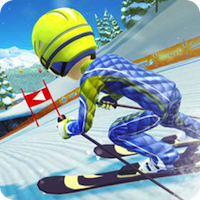
In Kinect Sports Season Two: Skiing, players race downhill against other skiers, weaving in between slalom flags while competing for the best time. Players control the game by interacting with Microsoft Kinect, using motion controls to perform different gestures that trigger certain in-game actions. Players squat down to gain more speed, lean left and right to make sharp turns, and jump to send their skier into the air. If players miss a slalom flag, they are penalized and more time is added to the clock. A bonus mode called Downhill Dodge is also available where the goal is to avoid obstacles while traveling down slopes. This game is recommended for kids ages 7 and up, as the crashes are not graphic, and the game is easy to learn and play.
Recalling and retaining information in our minds while working.
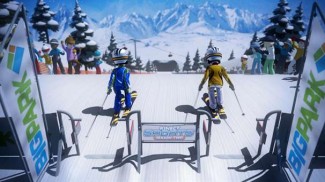 In Kinect Sports Season 2: Skiing players compete on a variety of courses, each of which are constructed with a unique layout and different flag positions. In order to improve their performance, players will need to memorize different aspects of each slope, like the locations of slalom flags, sharp turns and safe straightaways. Players are penalized if they miss a slalom flag, so knowing the locations of hard-to-reach flags makes them much easier to hit. Players should also remember the locations of each course's jumps, as hitting these can help improve their score. By recalling these elements as they race, players can know precisely when to crouch and pick up speed, and when to prepare for big jumps.
In Kinect Sports Season 2: Skiing players compete on a variety of courses, each of which are constructed with a unique layout and different flag positions. In order to improve their performance, players will need to memorize different aspects of each slope, like the locations of slalom flags, sharp turns and safe straightaways. Players are penalized if they miss a slalom flag, so knowing the locations of hard-to-reach flags makes them much easier to hit. Players should also remember the locations of each course's jumps, as hitting these can help improve their score. By recalling these elements as they race, players can know precisely when to crouch and pick up speed, and when to prepare for big jumps.
Being efficient and aware of our use of time and effort.
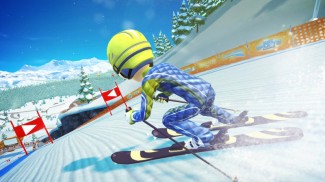 Balancing speed and precision is key to winning, as players must try to both finish fast and hit all of the slalom flags. Missing a flag earns a penalty that adds additional time to the clock, so simply racing through as quick as possible is not always the best tactic. On the other hand, taking too long to ensure each slalom flag is safely reached may end up costing more time overall. The key to winning in Kinect Sports Season 2: Skiing is knowing how much speed is needed to beat the opponent, and doing what is possible to avoid penalties and finish in good time.
Balancing speed and precision is key to winning, as players must try to both finish fast and hit all of the slalom flags. Missing a flag earns a penalty that adds additional time to the clock, so simply racing through as quick as possible is not always the best tactic. On the other hand, taking too long to ensure each slalom flag is safely reached may end up costing more time overall. The key to winning in Kinect Sports Season 2: Skiing is knowing how much speed is needed to beat the opponent, and doing what is possible to avoid penalties and finish in good time.
Use this PlayTogether guide to learn how you can help your child turn Kinect Sports Season Two: Skiing play time into a positive learning and relationship-building experience. To learn more about why playing games with your children is so important, check out our Science of Play page!
Take a minute to talk with your child about how the Time Management, and Working Memory thinking skills work, and why they are important for success in school and at home.
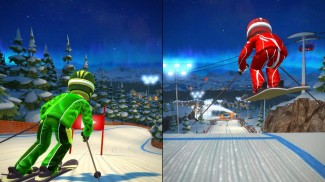 Kinect Sports Season Two: Skiing can be experienced as both a single, and multiplayer game, so the best way to play with your child is to play competitively. Players compete in downhill races where the goal is hit checkpoints, or dodge obstacles. Because Kinect Sports Season Two: Skiing lets players enjoy the action simultaneously, both players can work together to meet the gameplay goals listed below.
Kinect Sports Season Two: Skiing can be experienced as both a single, and multiplayer game, so the best way to play with your child is to play competitively. Players compete in downhill races where the goal is hit checkpoints, or dodge obstacles. Because Kinect Sports Season Two: Skiing lets players enjoy the action simultaneously, both players can work together to meet the gameplay goals listed below.
Gameplay Goals:
After you have completed each of the goals above, take a minute to pause the game and talk with your child about how the game is exercising your Working Memory and Time Management skills.
Our Make it Work activities are designed to transform your child’s gameplay into real-world improvements in thinking and academic skills. If you’re just getting started with LearningWorks for Kids, we suggest you try them all to find which are the best for you and your child.
Read over our Working Memory, and Time Management pages, and then take some time to introduce these thinking skills to your child.
Explain That:
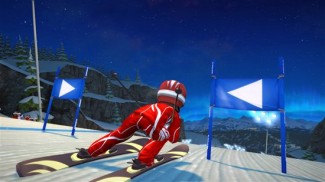 Conduct a memory project where you and your child brainstorm methods for remembering daily activities. This could include putting backpacks by the door in the evening, designating a drawer in the kitchen for your child's papers, money, and other school materials, and using cell phones as calenders. Compare levels of success using new strategies versus older methods and then discuss what was and wasn't helpful.
Conduct a memory project where you and your child brainstorm methods for remembering daily activities. This could include putting backpacks by the door in the evening, designating a drawer in the kitchen for your child's papers, money, and other school materials, and using cell phones as calenders. Compare levels of success using new strategies versus older methods and then discuss what was and wasn't helpful.
Prioritize. Create a “to do” list of necessary and discretionary activities. Then show your child how you list the items from most, to least important. Help your child create similarly ordered list for himself.
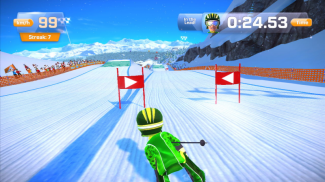 ADHD & Kinect Sports: Skiing
ADHD & Kinect Sports: SkiingChildren with ADHD struggle to complete assignments before deadlines, failing to acknowledge time constraints. Working to finish tasks in a timely manner is an important skills to master, especially as schoolwork begins to increase in quantity and difficulty. Kinect Sports: Skiing helps children with ADHD to be wary of the clock, as they must finish races before their opponent. Recalling the course layout is also important in slalom style racing, where children must maneuver between flags to gain speed. Knowing the location of each flag can prove to be the difference between winning and losing. Children with ADHD are forced to control their hyperactivity, and demonstrate the necessary self-control to steer between flags, and jump when prompted.
How to Use Kinect Sports: Skiing for Children with ADHD:
All membership plans come with full access to our entire suite of tools learning guides, and resources. Here are a few of the ones we think you’ll like the most: